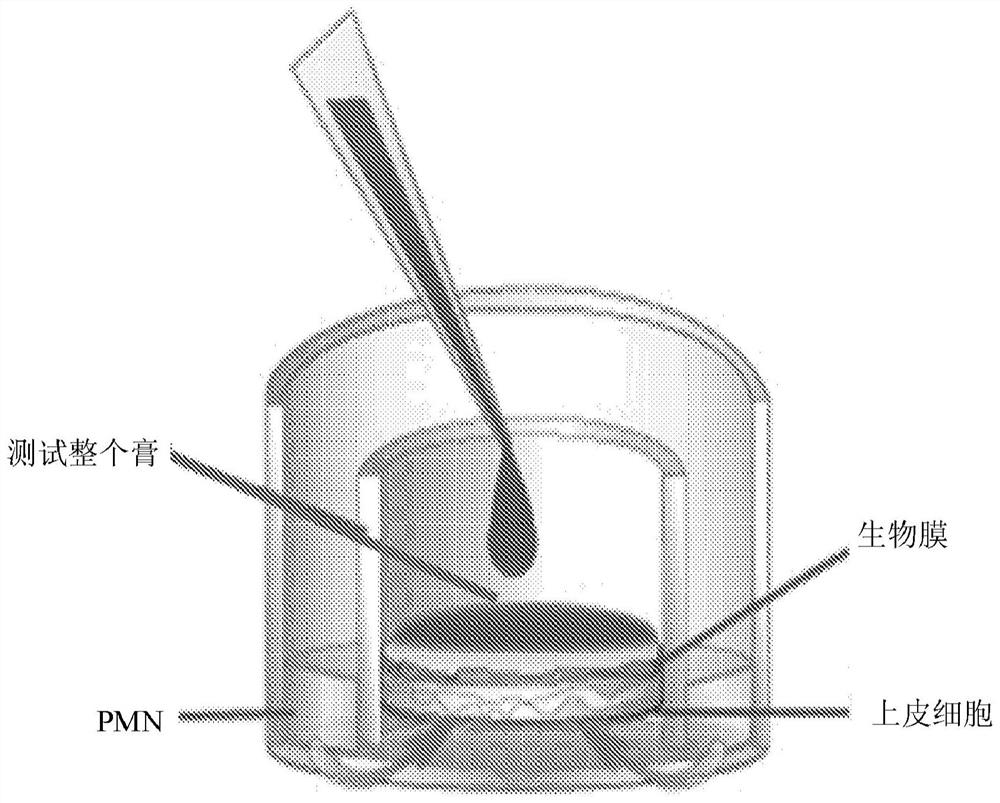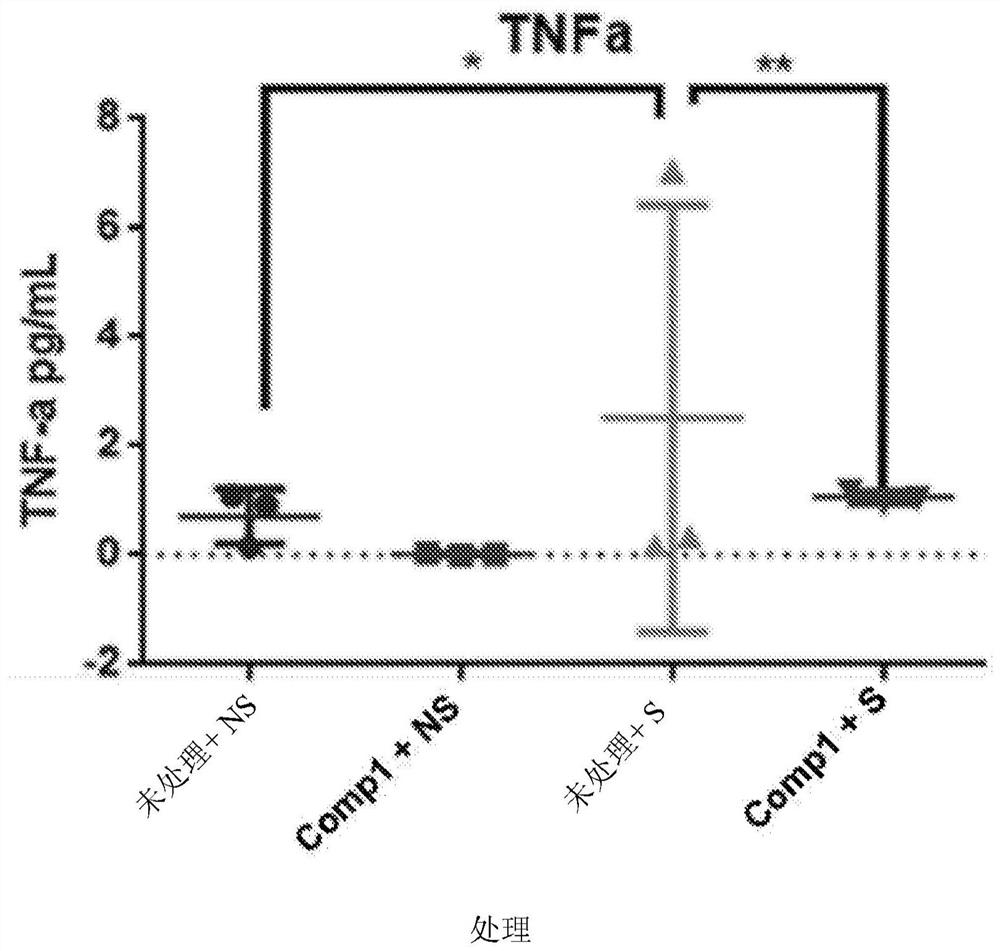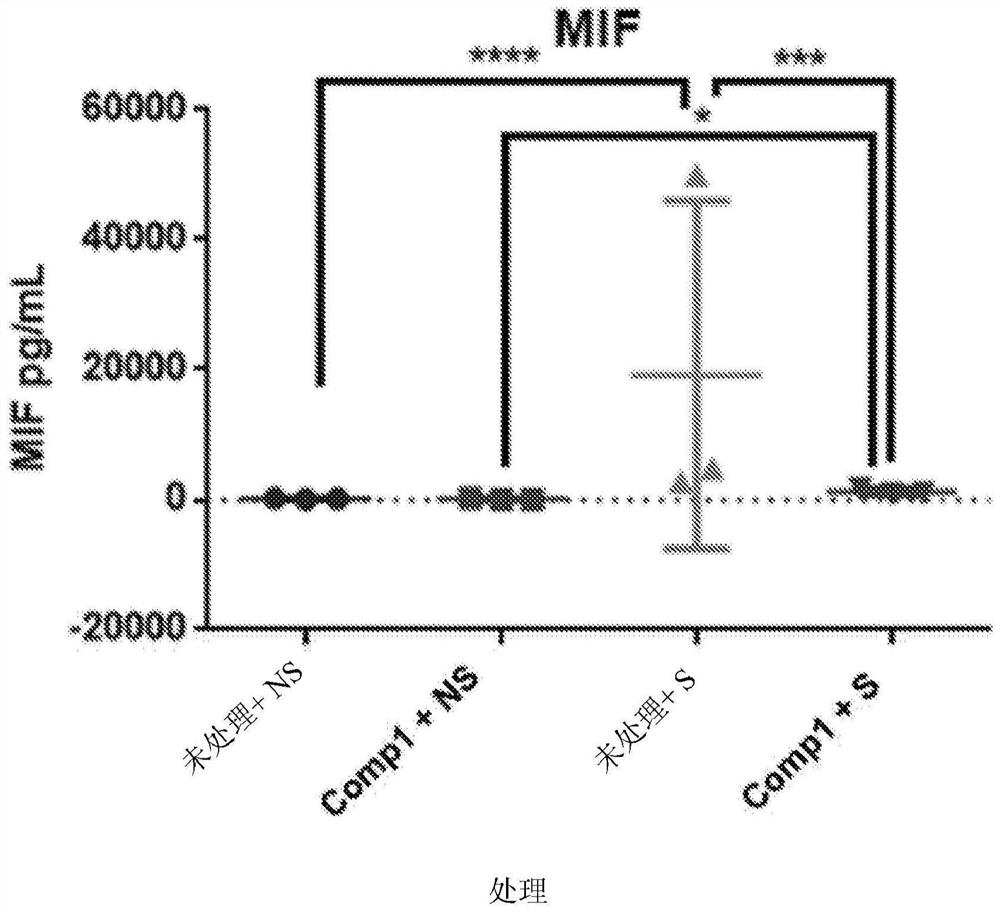Methods of inhibiting neutrophil recruitment to the gingival crevice
A technology of neutrophils and gums, applied in non-central analgesics, dentistry, pharmaceutical formulations, etc., can solve problems such as permanent damage to teeth and jaws
- Summary
- Abstract
- Description
- Claims
- Application Information
AI Technical Summary
Problems solved by technology
Method used
Image
Examples
example 1
[0054] figure 1 Contains a schematic representation of the gingival sulcus model (GCM). GCM is suitable for assessing product health benefits in a cell culture model that closely mimics the gingival sulcus. The gingival sulcus is home to hundreds of bacterial species as well as gingival epithelial cells and neutrophils. The proteomics, bacterial influence and odor of secreted or expressed proteins can be evaluated and used to compare the effects of various compounds and compositions. GCM combines three components, neutrophil-like cells, biofilm including oral bacteria, and oral epithelial tissue.
[0055] Neutrophil-like cells: HL60 cells (ATCC #CCLO-240) can be induced to differentiate into neutrophil-like cell types by exposing HL60 cells to retinoic acid. HL60 cells were maintained at 1 x 10 5 cells / ml (medium for HL60, IMEM ATCC#30-2005) at a cell density. Retinoic acid used to differentiate HL60 into neutrophil-like cells was prepared by dissolving retinoic acid in E...
example 2
[0071] Oral compositions comprising arginine are disclosed in WO 2017 / 223292, which is incorporated herein by reference. In some embodiments, an oral care composition comprises an orally acceptable carrier, zinc phosphate; and stannous fluoride. In some embodiments, the zinc phosphate is a preformed salt of zinc phosphate. In some embodiments, the zinc phosphate is present in an amount sufficient to dissociate stannous fluoride to provide a therapeutically effective amount of stannous ions in the aqueous solution. In some embodiments, the amount of zinc phosphate is 0.05% to 5% by weight relative to the weight of the oral care composition. In some embodiments, the amount of stannous fluoride is 0.05% to 5% by weight relative to the weight of the oral care composition. In some embodiments, the amount of water is about 12% by weight or greater relative to the weight of the oral care composition. In some embodiments, the oral care composition further comprises an abrasive and / ...
example 3
[0073] Oral compositions comprising arginine are disclosed in WO 2017 / 223311, which is incorporated herein by reference. The oral care composition is the oral care composition set forth in Example 2, further comprising an organic acid buffer system. In some embodiments, the oral care composition comprises water in an amount of 10% by weight or greater relative to the weight of the oral care composition. In some embodiments, the organic buffer system comprises a carboxylic acid and one or more conjugate base salts thereof, such as alkali metal salts thereof. In some embodiments, the acid is selected from citric acid, lactic acid, malic acid, maleic acid, fumaric acid, acetic acid, succinic acid, and tartaric acid. In some embodiments, the one or more conjugate base salts are independently selected from sodium and potassium salts or combinations thereof. In some embodiments, the acid is citric acid, and the one or more conjugate base salts include monosodium citrate (monobase)...
PUM
 Login to View More
Login to View More Abstract
Description
Claims
Application Information
 Login to View More
Login to View More - R&D
- Intellectual Property
- Life Sciences
- Materials
- Tech Scout
- Unparalleled Data Quality
- Higher Quality Content
- 60% Fewer Hallucinations
Browse by: Latest US Patents, China's latest patents, Technical Efficacy Thesaurus, Application Domain, Technology Topic, Popular Technical Reports.
© 2025 PatSnap. All rights reserved.Legal|Privacy policy|Modern Slavery Act Transparency Statement|Sitemap|About US| Contact US: help@patsnap.com



